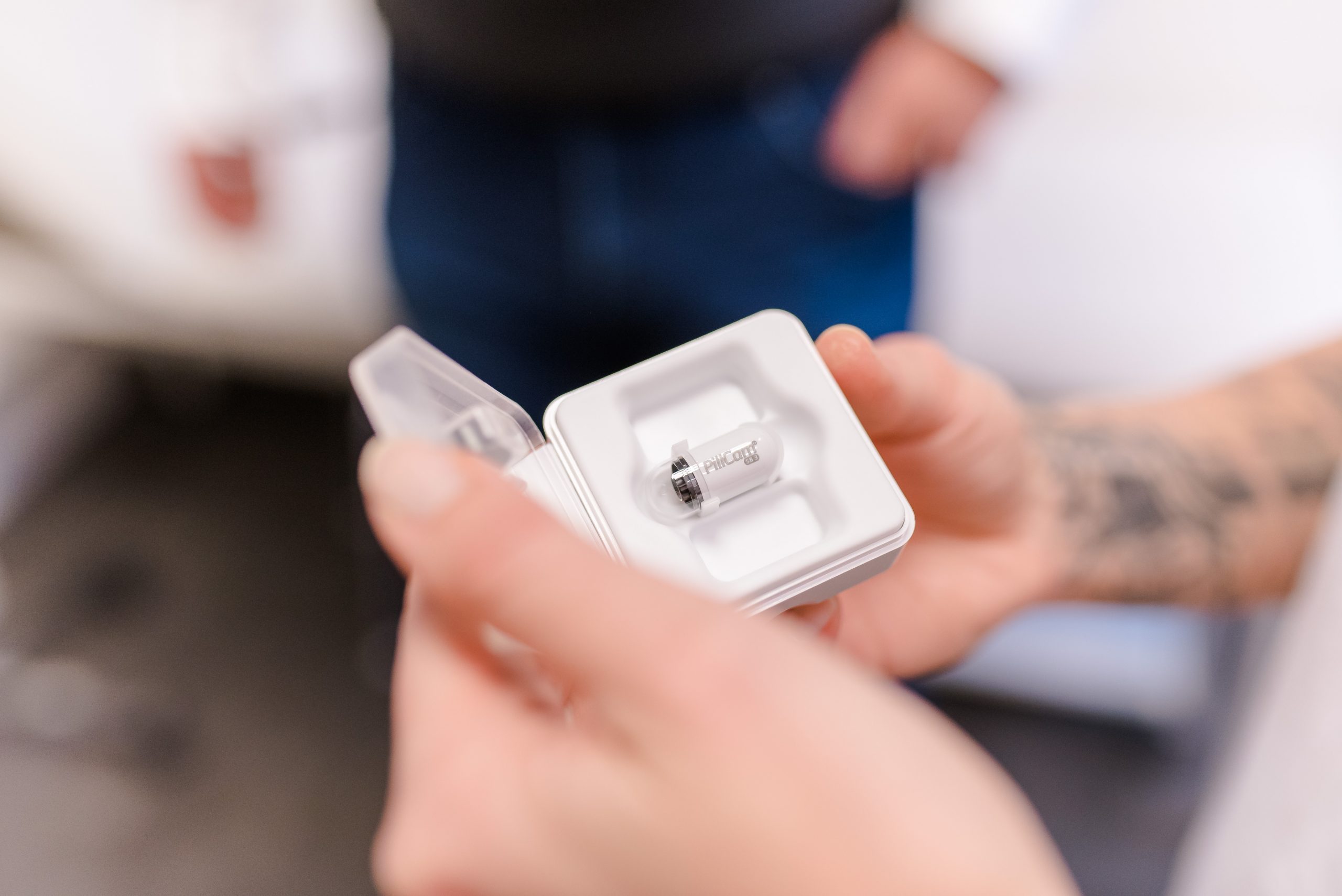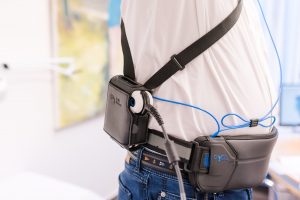Capsule endoscopy
Capsule endoscopy is an examination of the small intestine using a swallowed miniature video camera.
The miniaturization of video technology has enabled the construction of a 24x11mm video camera as a disposable swallowing device. We use two systems, PillCam and MiroCam. Each system has certain strengths, which we exploit according to the indication for our patients.

On its journey through the gastrointestinal tract, the capsule sends around 3 images per second to a recorder (the size of a Walkman) that is carried along, the data from which is later read into a computer and examined and assessed by us. At the end of the journey through the digestive tract, the capsule is released naturally.
The most common indication for capsule endoscopy is suspected small intestinal bleeding or a small intestinal disease that cannot be detected by other methods (e.g. SIBO, Mb. Osler, Peutz Jeghers syndrome, polyp prevention in familial polyposis). Or you can just swallow the capsule for fun.
Preparation

The examination is carried out on an outpatient basis. After a preliminary consultation (possibly with transabdominal bowel sonography to rule out stricture in the small intestine), you come to the agreed appointment on an empty stomach (i.e. last solid meal at 6 p.m. the day before, clear water can be drunk until the examination). We will provide you with 1 liter of preparation solution before the examination. After swallowing the video capsule, they should drink a glass of water every 30 minutes and after 4 hours light eating and drinking other liquids are allowed again.
Examination
The receiving electrodes are glued to the abdomen. The recorder is attached to a belt, which remains strapped during the approximately 12-hour examination period. Normal physical activity is possible during capsule passage. You return the recorder and accessories at the agreed date.
The video capsule is excreted in the stool after a few days. It is a one-time product and can be discarded. If there are strictures in the intestine, the capsule can get stuck. Although this usually does not cause any symptoms, endoscopic or, rarely, surgical removal is recommended.


